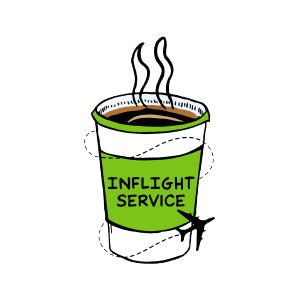Navigation and flight planning are essential for safe and efficient aviation. They help pilots ensure compliance with regulations, avoid hazards, and optimize fuel and time. Here’s what you’ll learn in this guide:
- Navigation Methods: From visual pilotage to advanced GPS systems like RNAV.
- Flight Planning Essentials: Weather analysis, route planning, and fuel calculations.
- Modern Tools: Digital platforms like ForeFlight simplify planning with real-time updates.
- Interview Prep: Key topics like Point of No Return (PNR) and emergency management.
Quick Comparison of Navigation Methods:
| Method | Use | Limitations |
|---|---|---|
| Pilotage | Visual landmarks for VFR flights | Weather-dependent, limited range |
| Dead Reckoning | Speed, time, direction estimates | Prone to cumulative errors |
| VOR Navigation | Ground-based directional aid | Relies on fixed infrastructure |
| GPS/RNAV | Precise satellite navigation | Equipment failure, signal interference |
This guide blends traditional navigation techniques with modern tools to help you master aviation safety, efficiency, and career growth.
What is Area Navigation? Understanding How RNAV and Aircraft Navigation Systems work
Navigation Methods
Modern aviation relies on various navigation methods, each tailored to specific flight needs and conditions. Pilots must understand these methods to ensure safe and efficient operations.
Types of Navigation: From Visual to GPS
Different navigation methods are suited for different scenarios, each with unique strengths and limitations:
| Navigation Method | Key Features and Considerations |
|---|---|
| Visual/Pilotage | Relies on direct observation; limited by weather and visibility range. |
| Dead Reckoning | Useful for backup and verification; prone to cumulative errors over time. |
| Radio Navigation | Ideal for IFR (Instrument Flight Rules) operations but depends on ground-based infrastructure. |
| GPS/Satellite | Offers unmatched precision but can be affected by equipment failures or signal interference. |
After choosing the right navigation method, pilots must focus on interpreting aviation charts to ensure a smooth and safe journey.
Reading Aviation Charts
Aeronautical charts are indispensable for flight planning and navigation. They provide essential details about airspace, terrain, and navigation aids.
What Charts Include:
- Airspace classifications and boundaries
- Locations and frequencies of navigation aids
- Terrain features, including obstacles
- Airport details, like runway specifications
While digital charts with real-time updates have become the norm, understanding traditional chart reading remains a fundamental skill for pilots.
Once pilots master chart reading, they can perform critical calculations to refine their navigation accuracy.
Flight Math: Speed, Time, and Direction
Charts set the stage, but precise navigation depends on accurate calculations that factor in elements like wind and magnetic variation.
Key Calculations:
- Adjusting true heading to account for magnetic variation
- Determining ground speed by factoring in wind effects
- Estimating flight time based on distance and speed
Modern GPS systems can achieve accuracy within 1-2 meters under optimal conditions [4]. Despite this, traditional navigation skills remain vital as a backup and for cross-checking GPS data [1][3].
These calculations are particularly important for maintaining precision during extended flights or when navigating complex airspace.
Flight Planning Steps
Weather data plays a crucial role in ensuring safe flight operations. According to the Federal Aviation Administration (FAA), proper flight planning can help prevent up to 30% of general aviation accidents attributed to weather conditions [5].
Weather Analysis and Briefing
Pilots need to gather detailed weather information using tools like METARs (Meteorological Aerodrome Reports) and TAFs (Terminal Aerodrome Forecasts). These resources provide essential data for making informed decisions.
| Weather Element | Impact on Flight |
|---|---|
| Current Conditions | Helps decide whether to proceed |
| Forecast | Influences route and altitude |
| Hazards | Guides alternative route planning |
After reviewing weather conditions, the next step is to map out a route that is both safe and efficient, while staying within the boundaries of airspace regulations.
Route Planning and Airspace Rules
Choosing the right route requires balancing operational efficiency with compliance to regulations [4].
Key Factors in Route Planning:
- Airspace restrictions and available navigation aids
- Terrain clearance and backup route options
- Air Traffic Control (ATC) requirements and temporary restrictions
Once the route is determined, pilots must calculate fuel needs and ensure the aircraft’s weight remains within operational limits.
Fuel and Weight Planning
Accurate fuel and weight planning is essential for a safe and efficient flight.
Fuel Planning Includes:
- Fuel needed for the planned route and aircraft specifications
- Reserve and contingency fuel for unexpected deviations
- Fuel required for reaching an alternate airport, if necessary
- Additional taxi fuel for ground operations
Weight planning involves balancing payload, fuel, and the aircraft’s performance capabilities. Digital tools can assist, but manual checks are crucial to avoid errors.
| Component | Consideration | Impact |
|---|---|---|
| Basic Empty Weight | Includes structure and equipment | Forms the baseline for planning |
| Payload | Passengers, baggage, and cargo | Affects aircraft performance |
| Fuel Load | Fuel required for the mission | Depends on flight distance |
| Performance Limits | Max takeoff/landing weights | Ensures safety margins |
While technology simplifies these calculations, double-checking the numbers manually is a must to ensure reliable results [2].
sbb-itb-de05b1b
Modern Navigation Tools
The world of flight navigation has seen a massive shift thanks to advanced digital tools and satellite-based systems, delivering greater precision and efficiency.
GPS and RNAV Basics
GPS and RNAV systems allow for accurate navigation and flexible routing, reducing reliance on ground-based aids and improving overall operations [1]. These systems offer:
- Direct routing options
- Increased flight safety
- Better fuel usage
- Real-time position tracking
Digital tools take these features further, combining essential data into streamlined platforms for easier planning [3].
Digital Planning Tools
Platforms like ForeFlight and SkyVector make flight planning easier by incorporating real-time weather updates, interactive charts, and automated calculations. Here’s how they help:
| Feature | Benefit |
|---|---|
| Weather Integration | Supports informed decisions |
| Digital Charts | Simplifies route planning |
| Automated Systems | Reduces calculation errors |
| NOTAM Updates | Provides up-to-date safety info |
These tools not only ensure accuracy but also cut down on the complexity of planning [2].
Pilot Pathfinder: A Tool for Career Growth

Beyond navigation, Pilot Pathfinder helps pilots aiming for airline careers. It offers logbook integration and resources for mastering technical navigation knowledge during interviews. This platform works alongside traditional tools to simplify career development.
"Modern navigation tools significantly enhance safety and efficiency in flight operations by providing accurate and real-time information. These tools enable more precise fuel planning and route optimization, leading to cost savings and reduced environmental impact" [2][3].
Interview Prep: Navigation and Planning
Technical interviews for airline roles often center on navigation and flight planning. To excel, you’ll need to combine a solid grasp of the theory with hands-on problem-solving skills.
Top Interview Questions
Expect questions that test your ability to apply navigation and planning knowledge in practical settings. Here are some key areas to focus on:
| Topic | Interview Focus | Application |
|---|---|---|
| Technical Knowledge | Point of No Return (PNR), Equal Time Point (ETP) | Explaining and performing calculations |
| Operational Decision-Making | Route changes, alternate planning | Highlighting safety-focused decisions |
| Emergency Management | Diversions, system failures | Demonstrating problem-solving under pressure |
| Performance Analysis | Aircraft limitations, weather impacts | Applying operational expertise |
Practice Scenarios
Get ready by working through realistic scenarios that combine route planning, weather challenges, and emergency situations. Use tools like flight computers and digital planning software to calculate wind corrections, fuel needs, and diversion plans. Focus on tasks that showcase both your technical know-how and decision-making abilities.
Interview Success Tips
To stand out in technical interviews:
- Speak clearly and accurately when explaining concepts.
- Share relevant examples to illustrate your expertise.
- Highlight how safety shapes your decisions.
- Tie theoretical knowledge to practical use cases.
Show you’re comfortable with both modern tools and traditional methods. Be ready to discuss how GPS, RNAV, and digital platforms contribute to safer, more efficient flights [1][3].
Summary
Navigation and flight planning are the foundation of safe and efficient aviation. This guide breaks down key concepts and practical techniques every pilot should know.
Key Points Review
Modern flight planning blends traditional methods with advanced digital tools to improve safety and efficiency. Here’s a quick breakdown:
| Area | Key Considerations | Impact on Operations |
|---|---|---|
| Route Optimization | Fuel efficiency, airspace rules | Reduces fuel consumption by up to 10% |
| Performance Planning | Density altitude, weight/balance | Ensures safe and reliable operations |
Effective planning can reduce delays by 30% while boosting safety margins.
"Sheffield School of Aeronautics emphasizes that mastering flight planning essentials is critical for aviation safety and efficiency."
Next Steps
To sharpen your navigation and flight planning skills, here are some actionable steps:
- Stay Updated: Learn to use digital tools and weather systems, follow FAA regulations, and stay proficient with performance calculations like density altitude and weight/balance.
- Master Performance: Hone your skills in aircraft performance calculations, practice emergency scenarios, and review your planning decisions to improve over time.
These efforts not only enhance your skills but also make you a strong candidate for airline roles. Precision and continuous learning are key to effective flight planning.
"As Pilot in Command, CFR § 91.103 requires familiarity with all relevant flight information."
For career growth, consider using tools like Pilot Pathfinder to document and organize your flight planning expertise [1][2].
FAQs
What is the difference between traditional navigation and RNAV?
Traditional navigation relies on fixed routes that connect ground-based stations, while Area Navigation (RNAV) allows for more direct and efficient flight paths.
RNAV improves routing by enabling flights to take more direct paths, which helps reduce both fuel use and emissions. Here’s a quick comparison:
| Feature | Traditional Navigation | RNAV |
|---|---|---|
| Route Planning | Fixed paths between stations | Direct routing to any point |
| Fuel Efficiency | Lower due to indirect routing | Up to 12% fuel savings [6] |
| Environmental Impact | Higher emissions | 10% reduction in CO2 emissions [7] |
"RNAV is a key component of modern air traffic management, enabling more efficient and environmentally friendly flight operations." – International Civil Aviation Organization (ICAO)
RNAV uses GPS for precise location tracking and real-time route adjustments [2]. This system helps pilots avoid restricted airspace and take advantage of favorable winds [1]. For pilots, understanding RNAV is crucial, especially in technical interviews where navigation skills are often evaluated.




